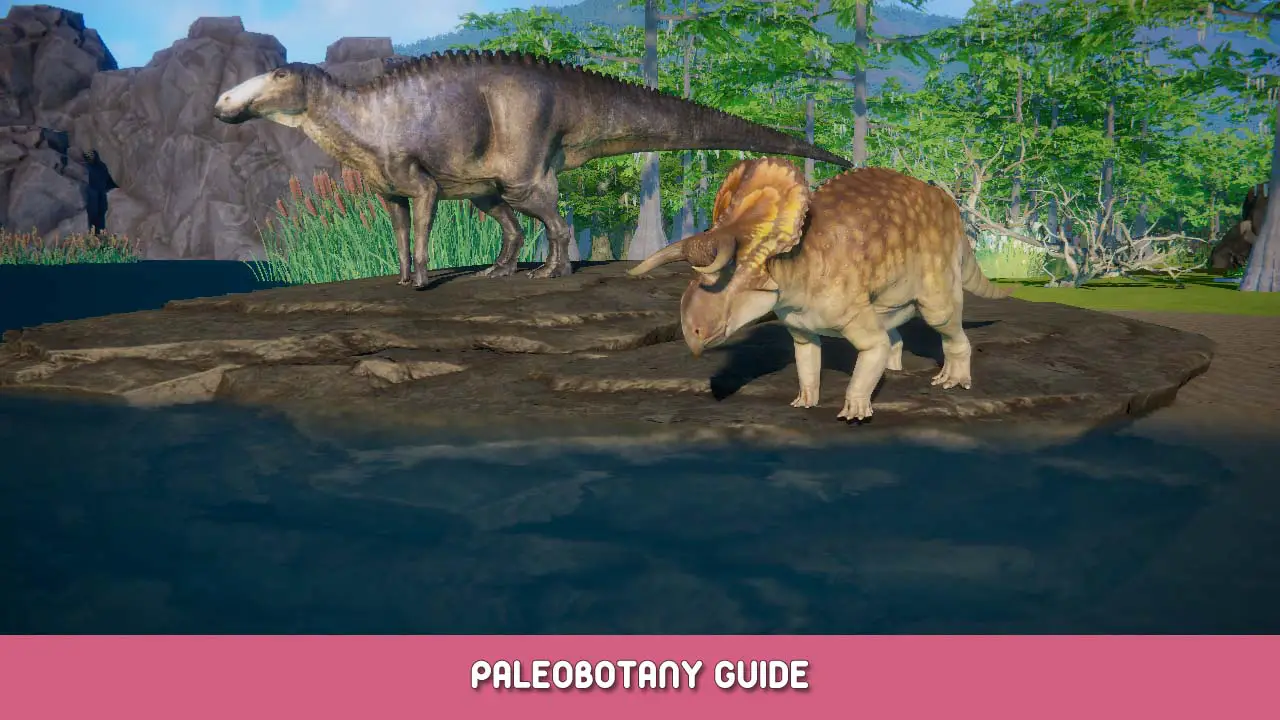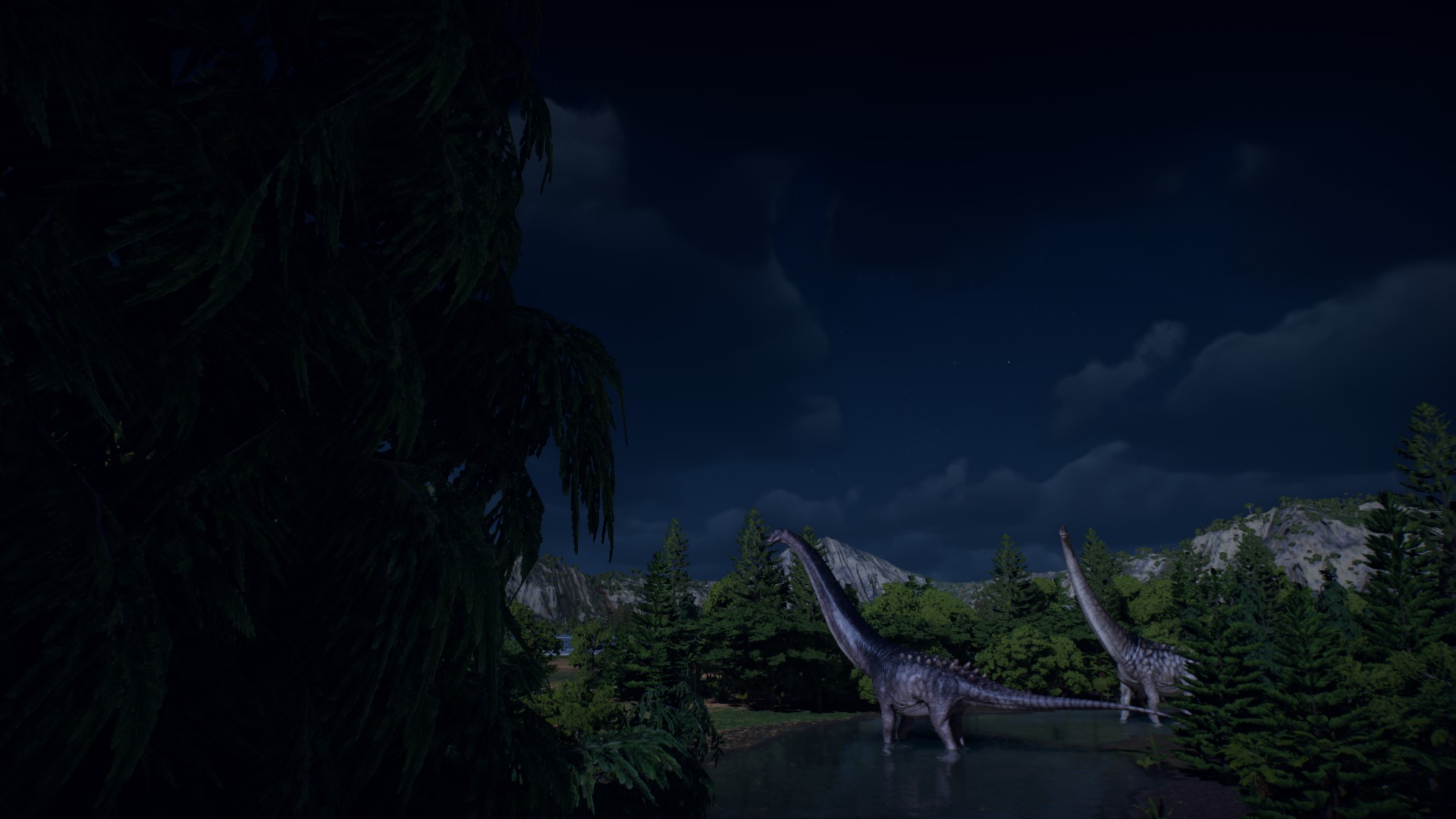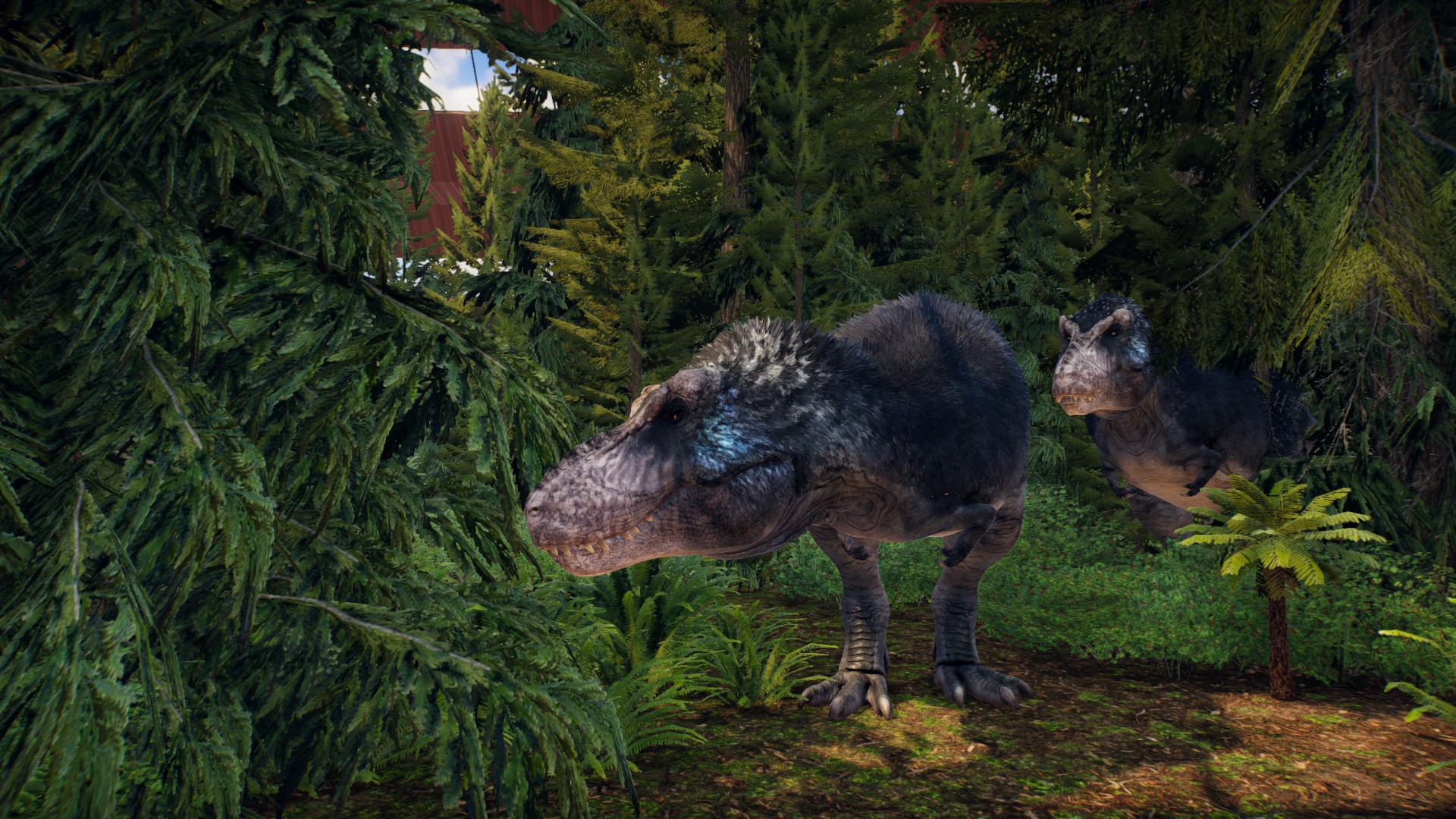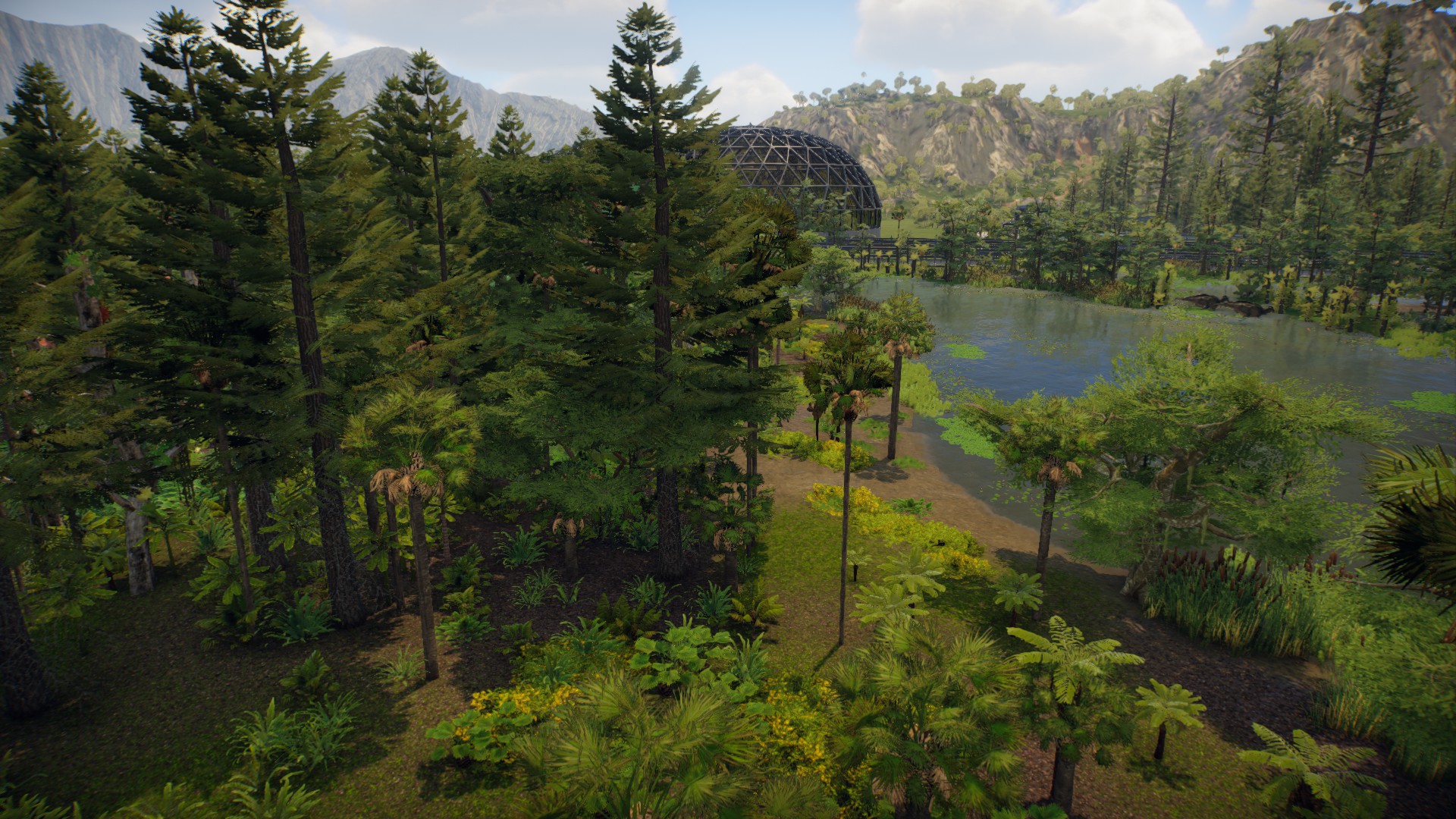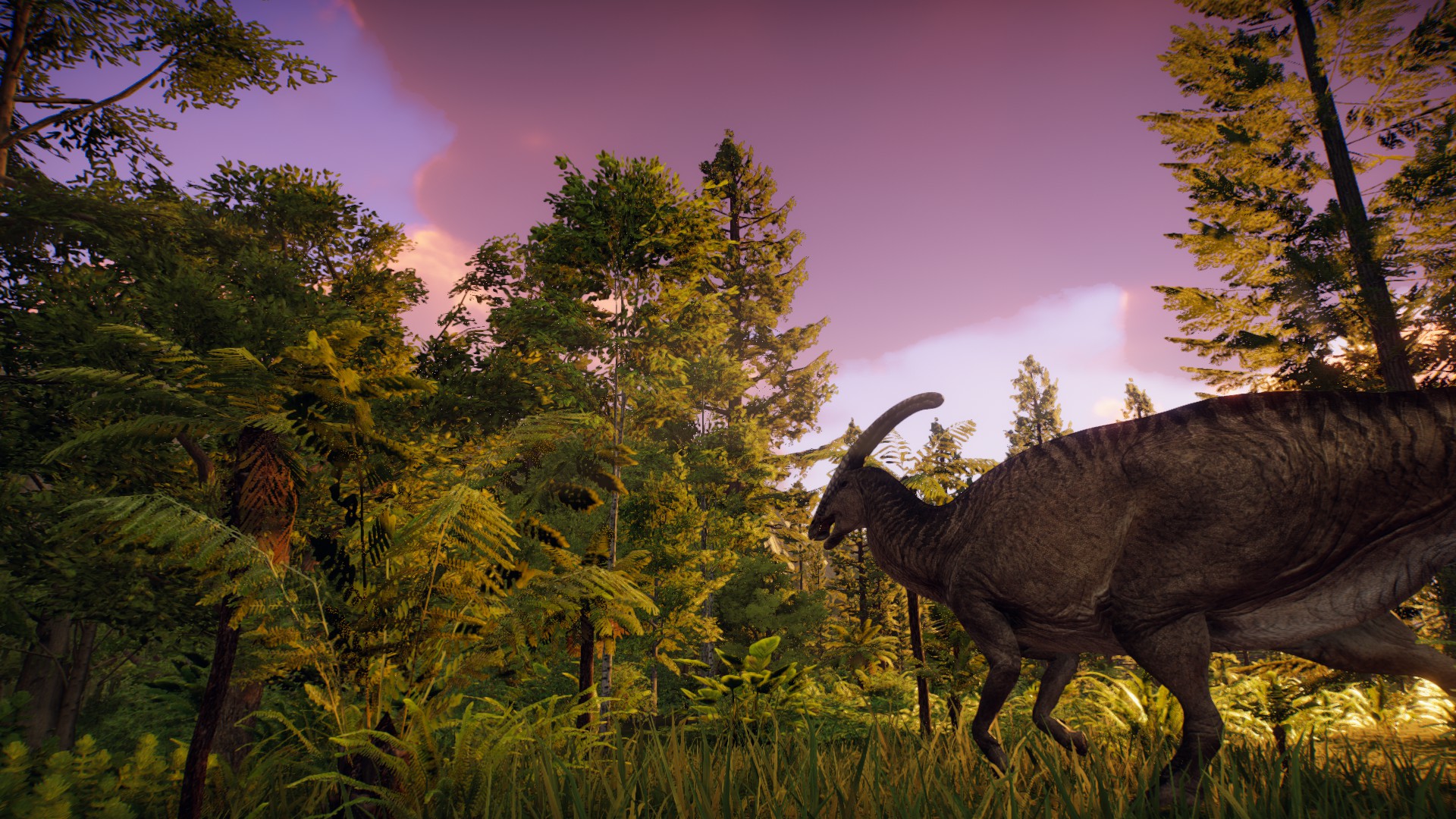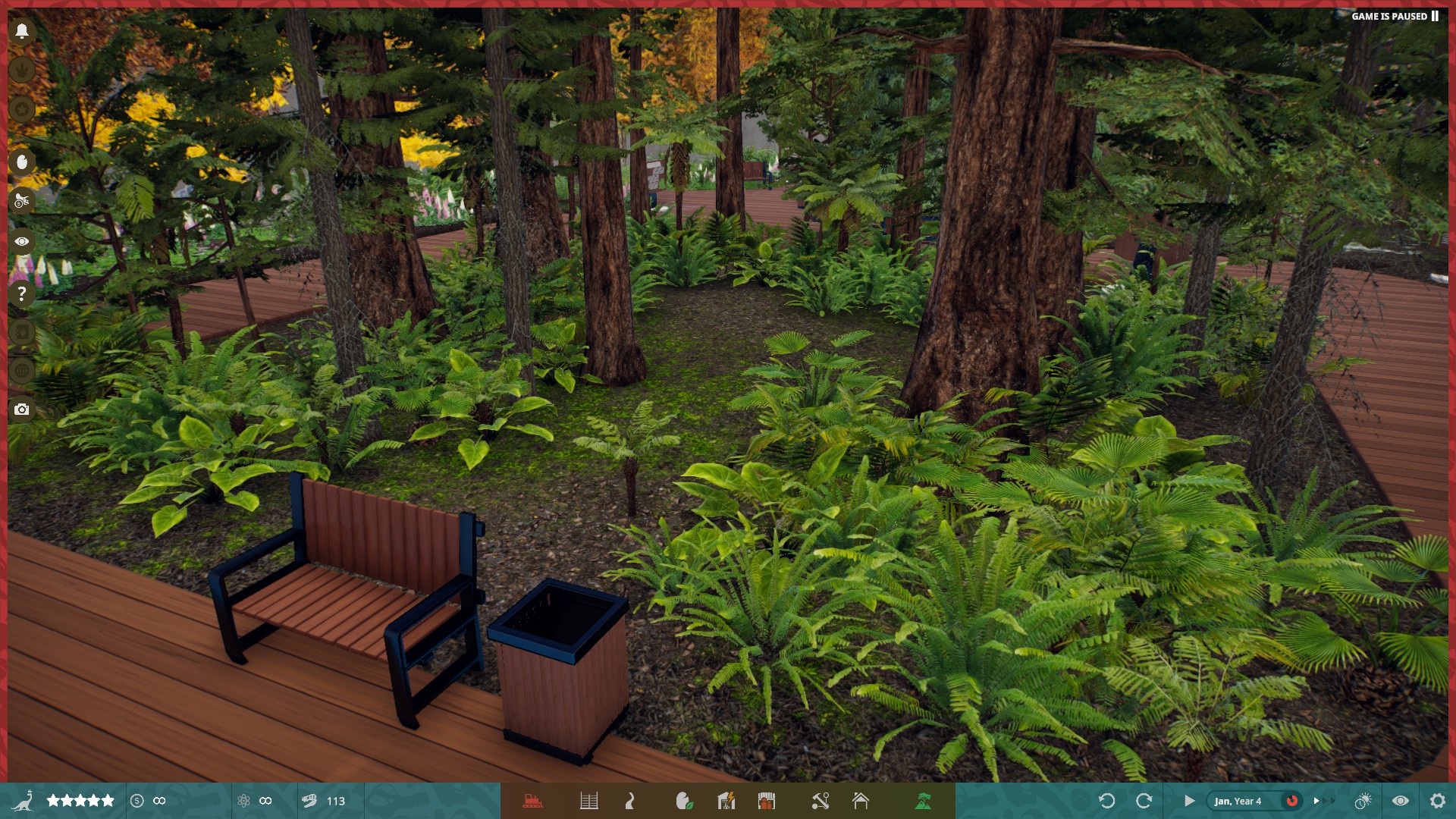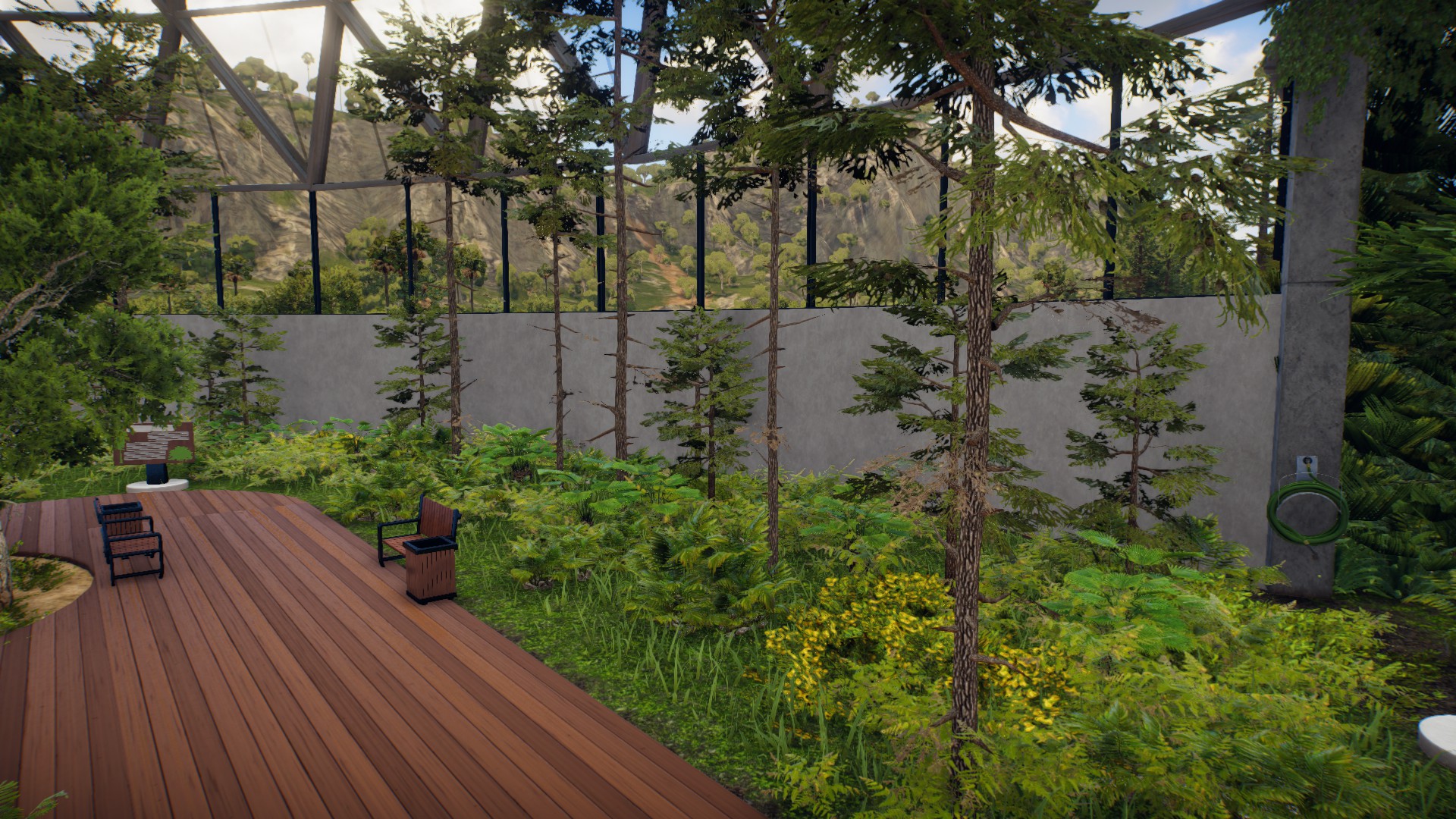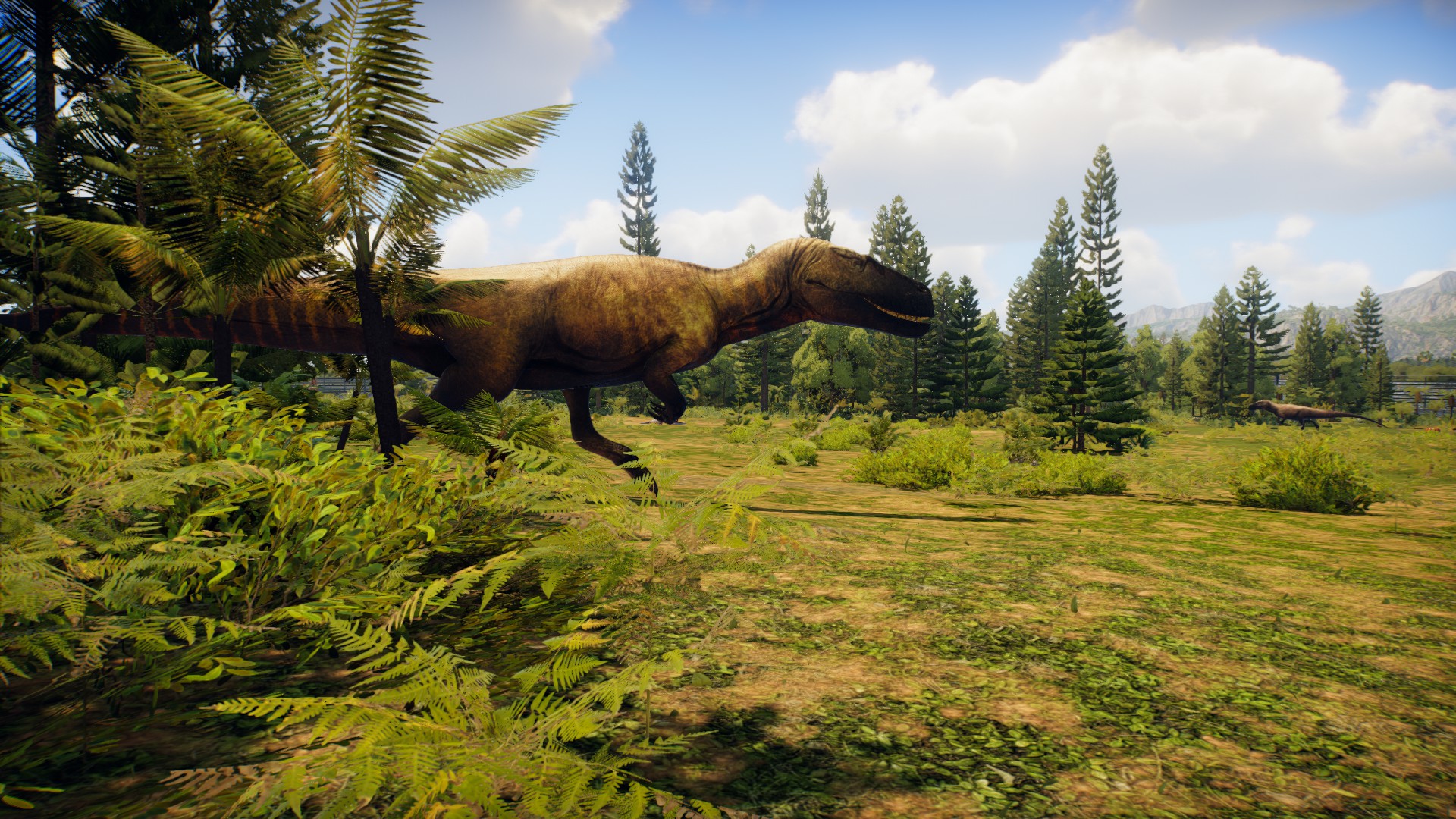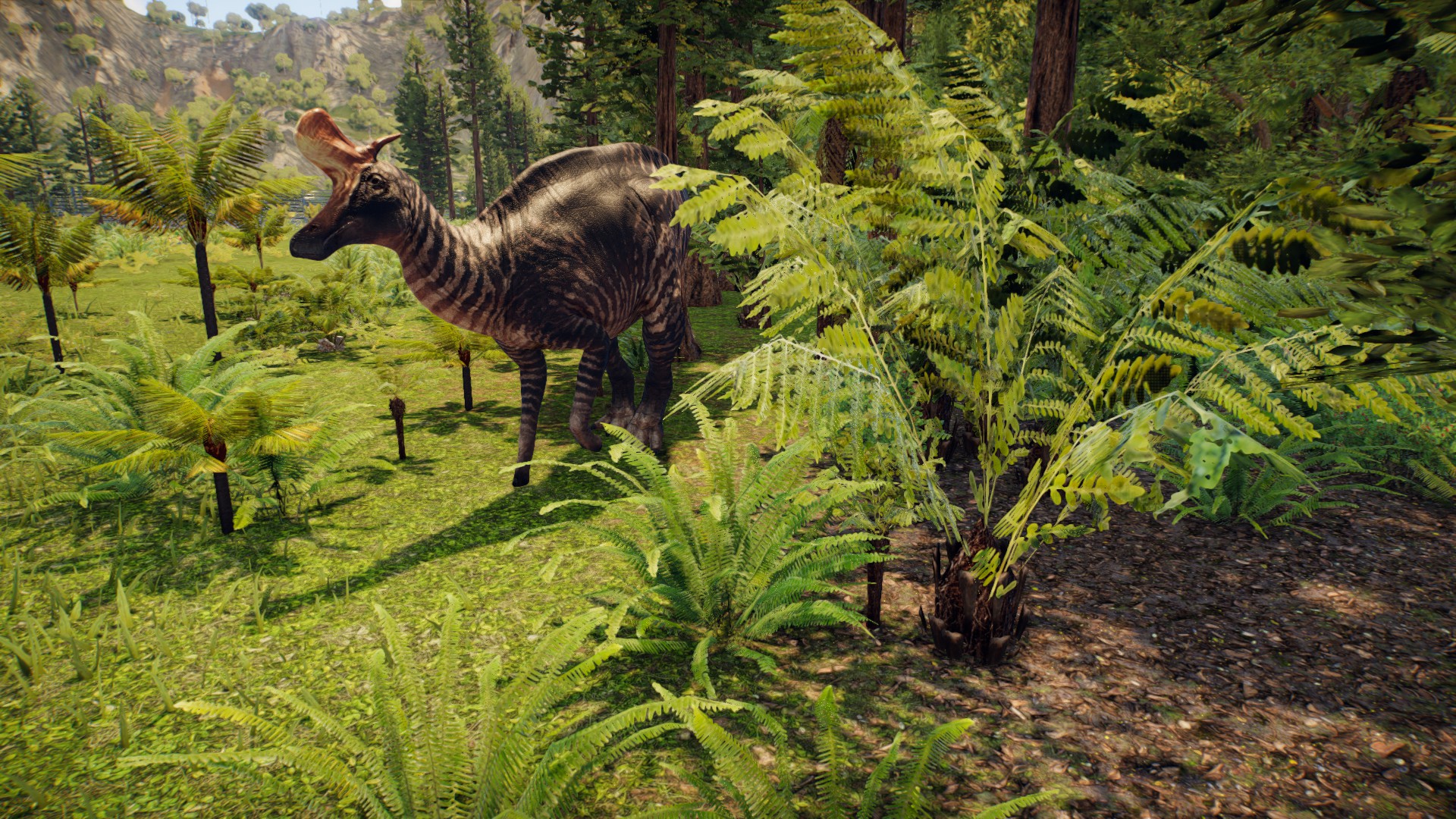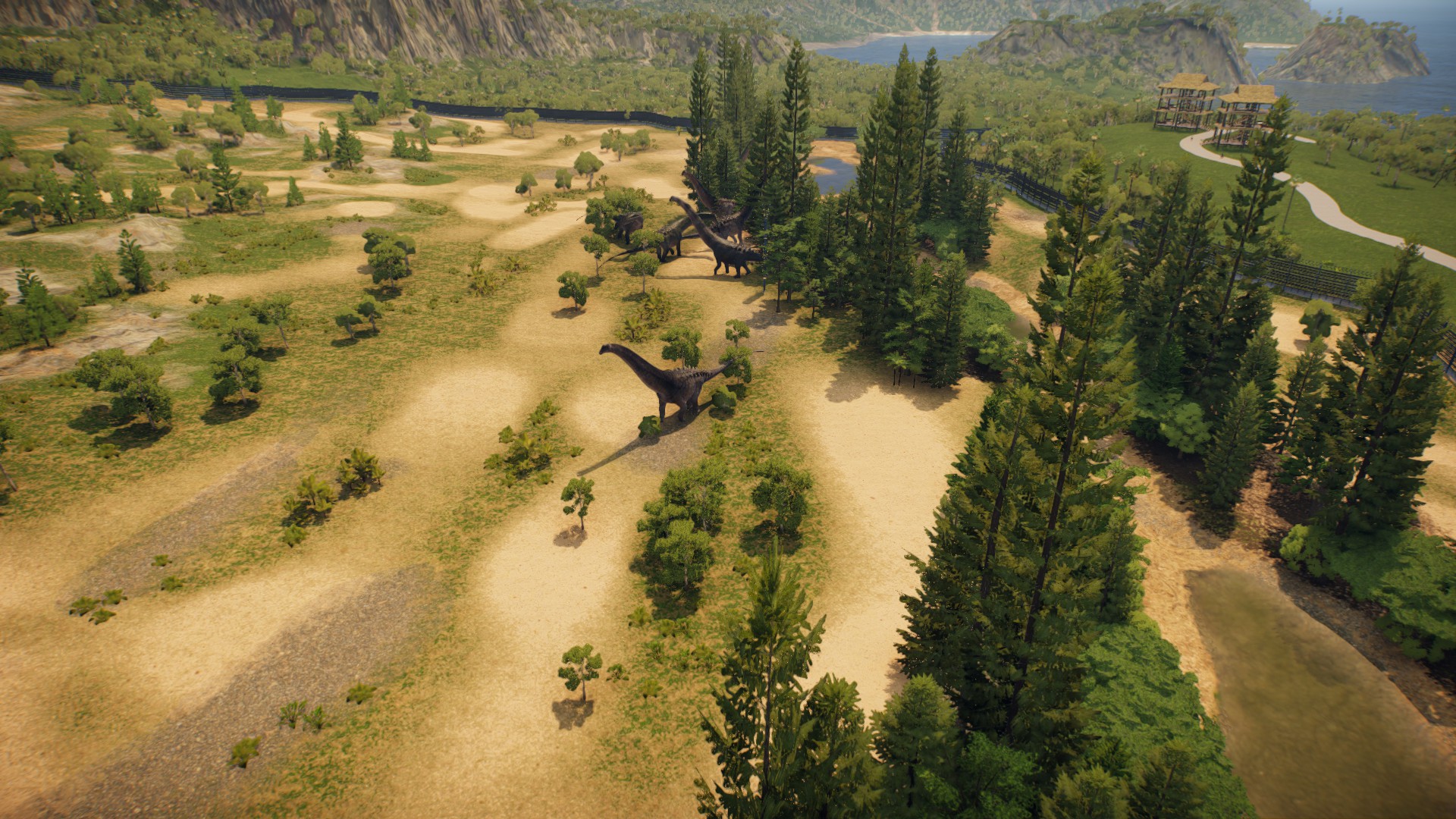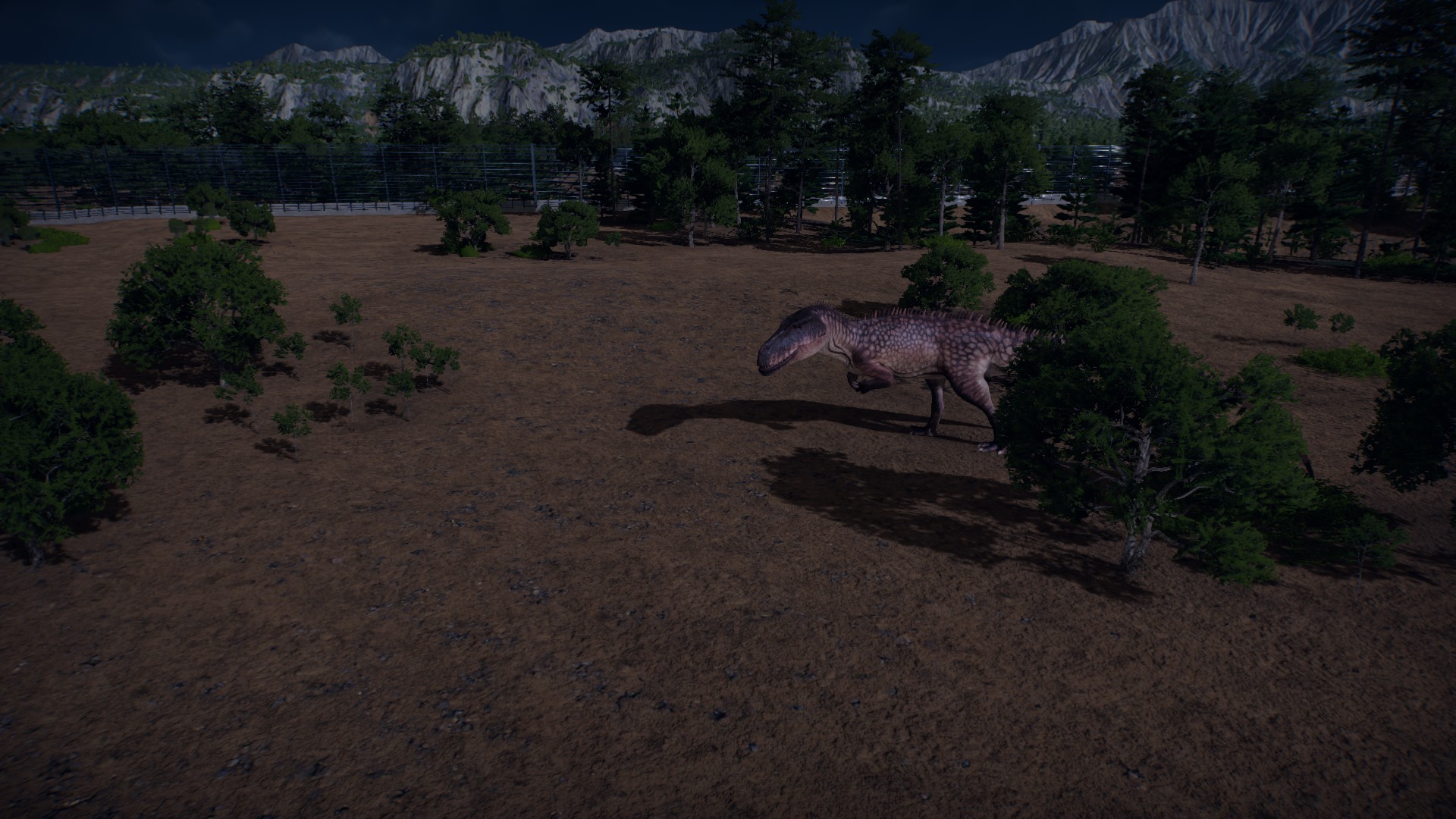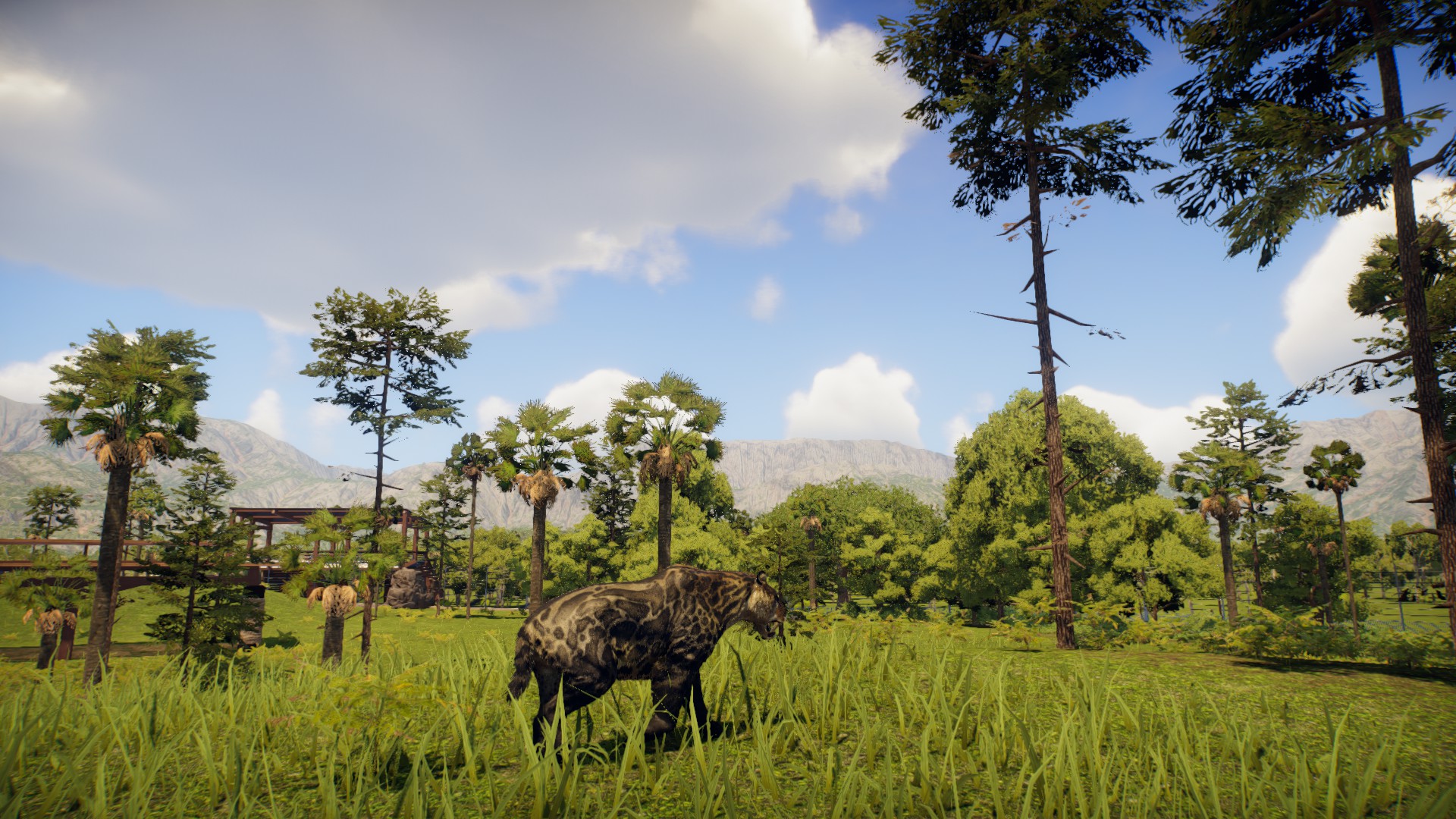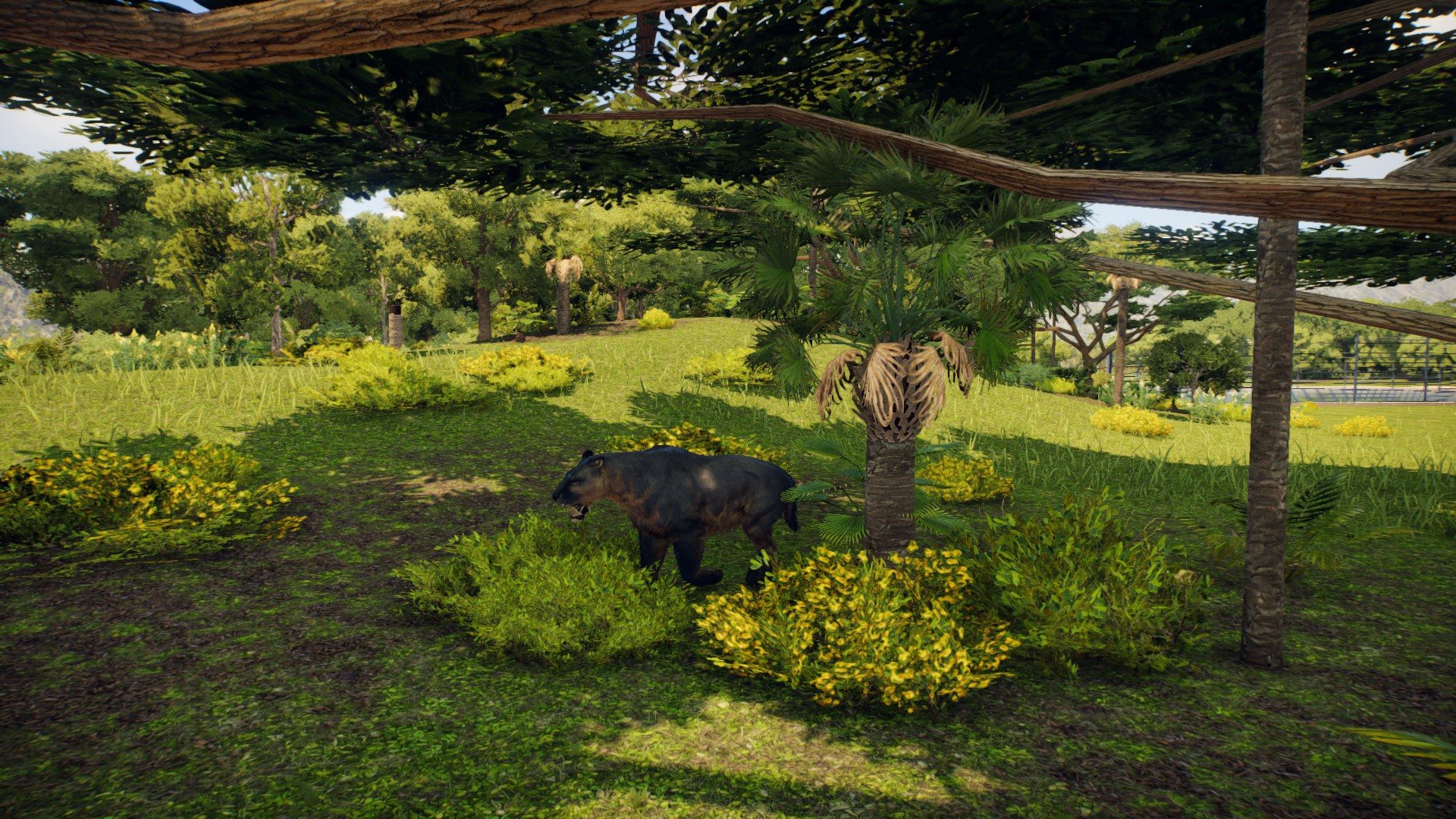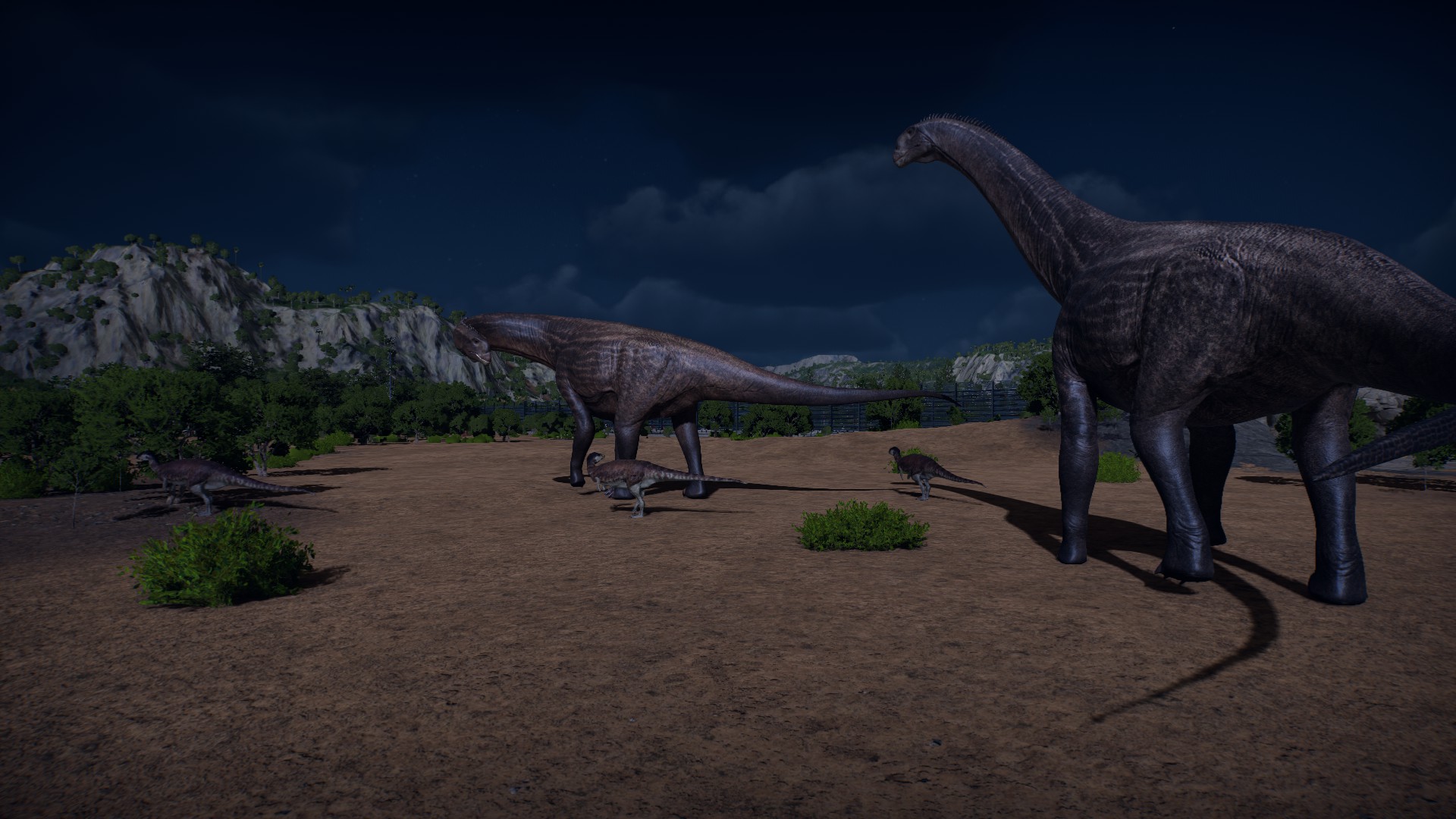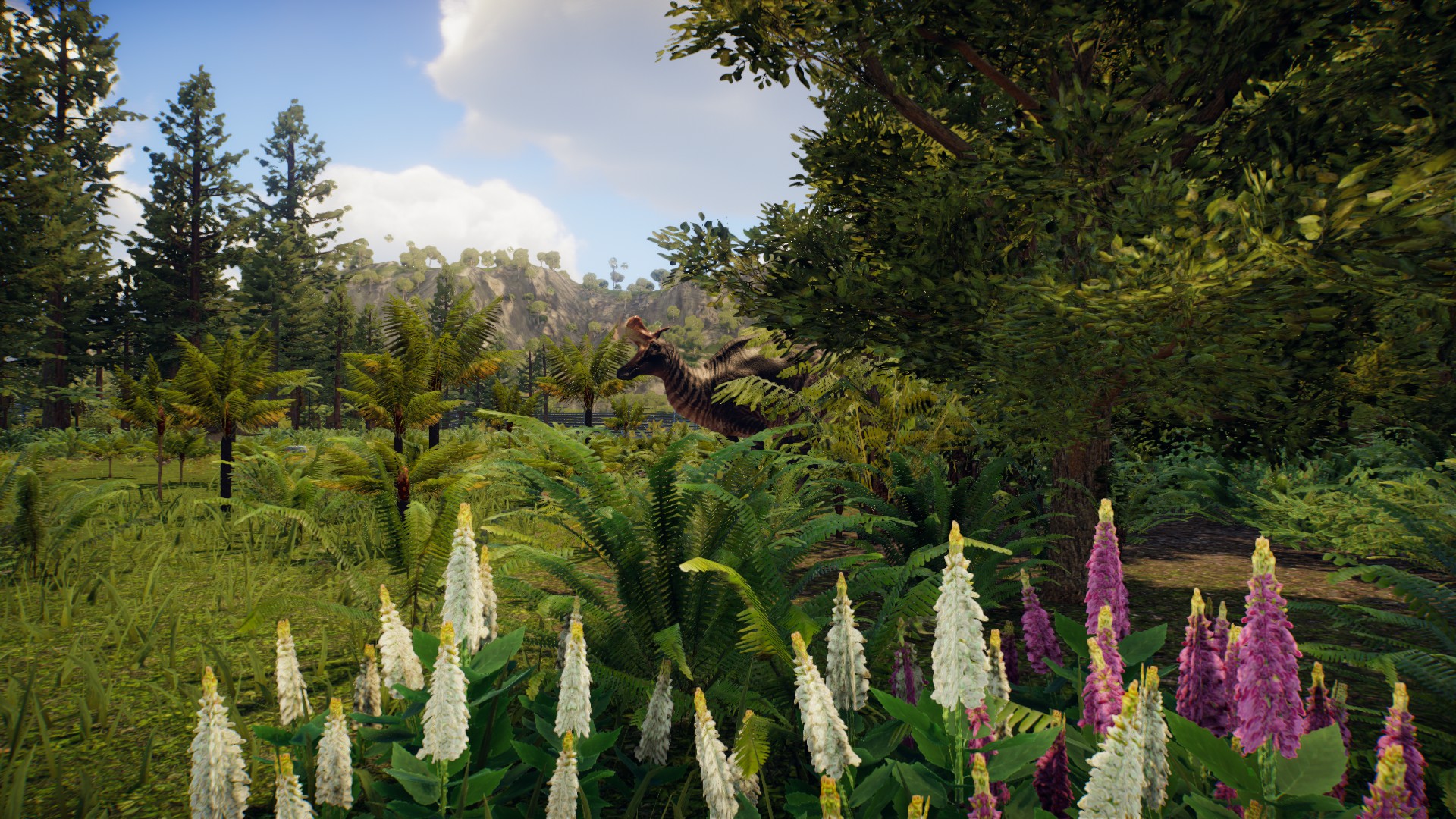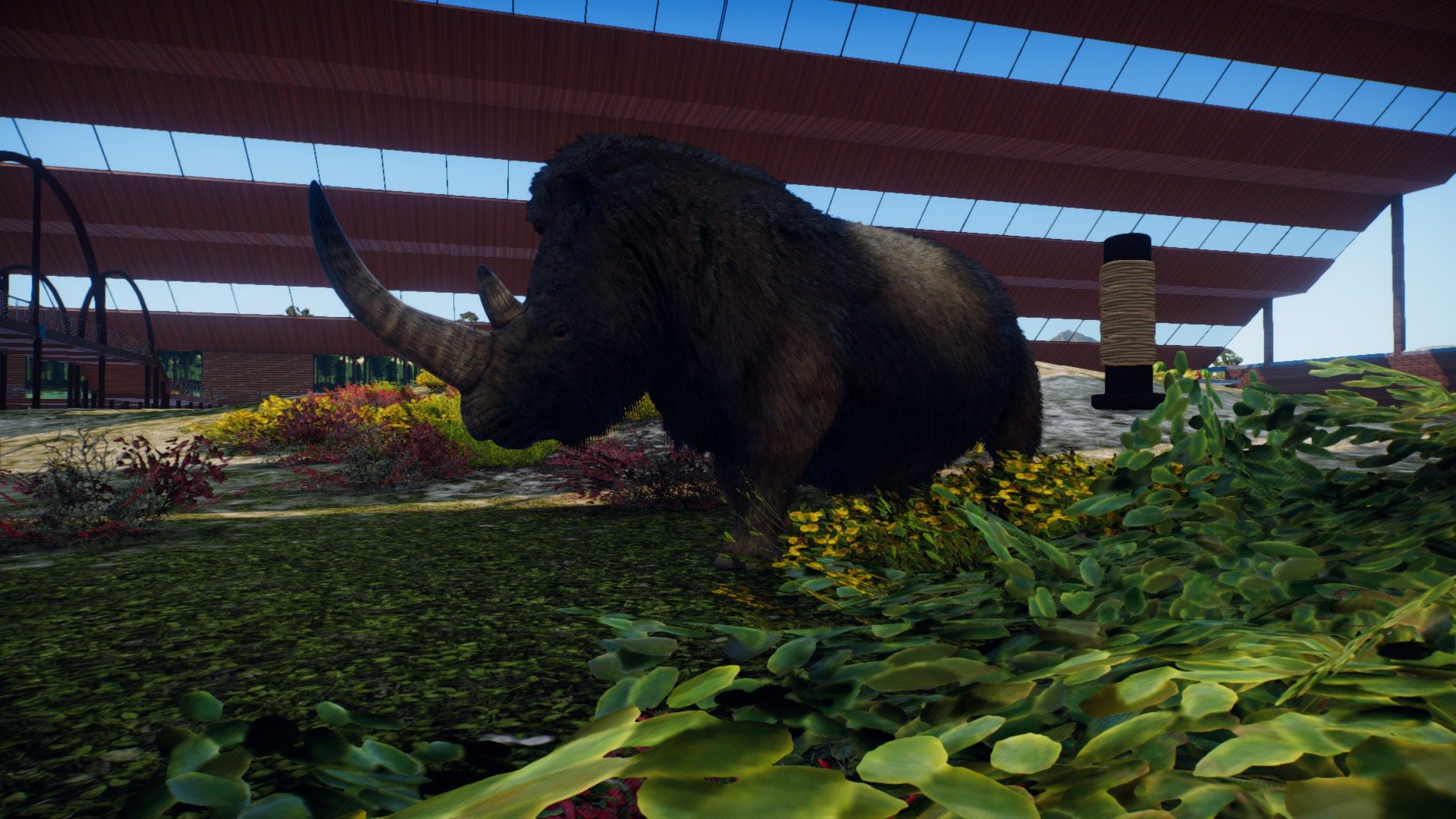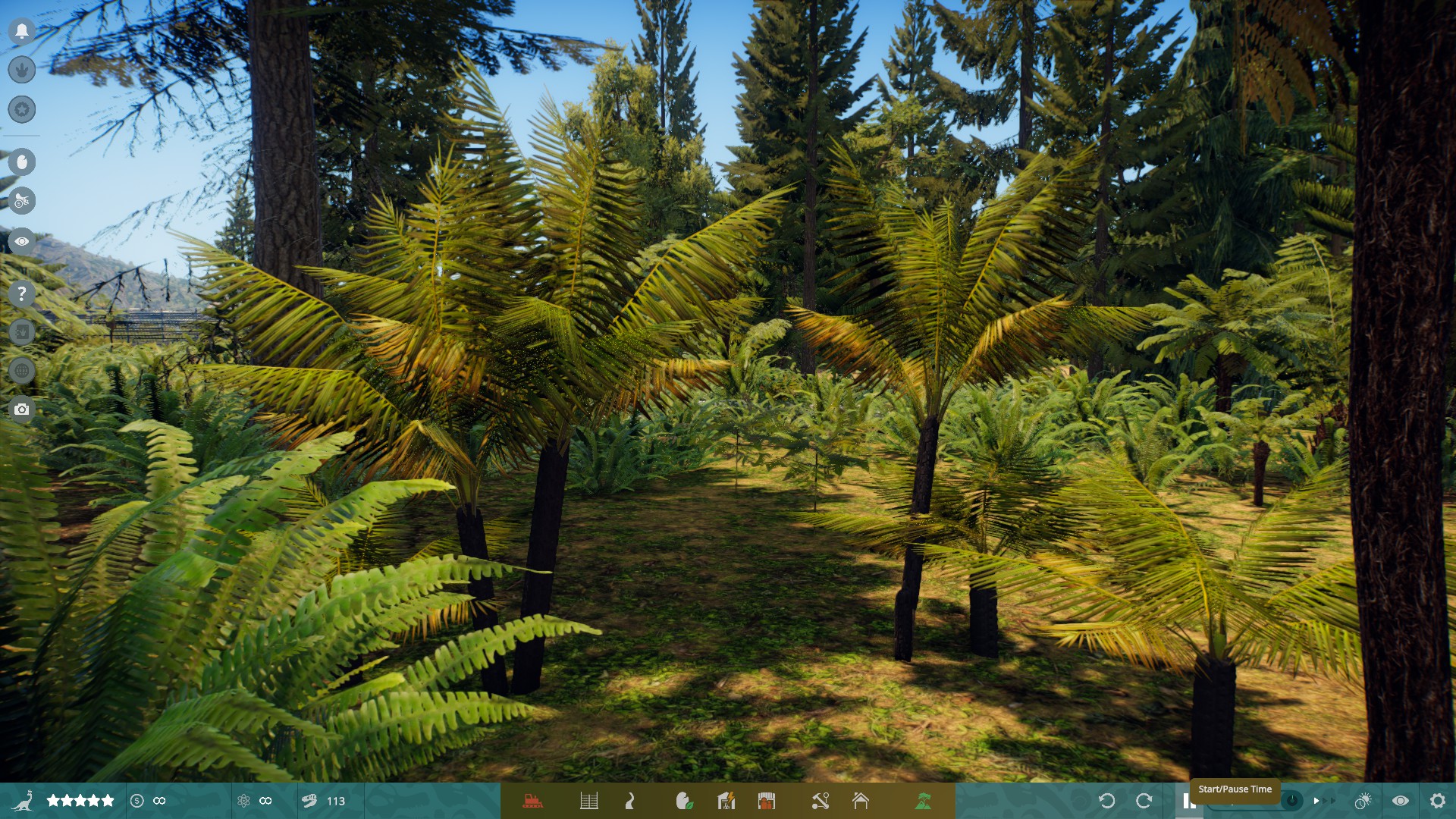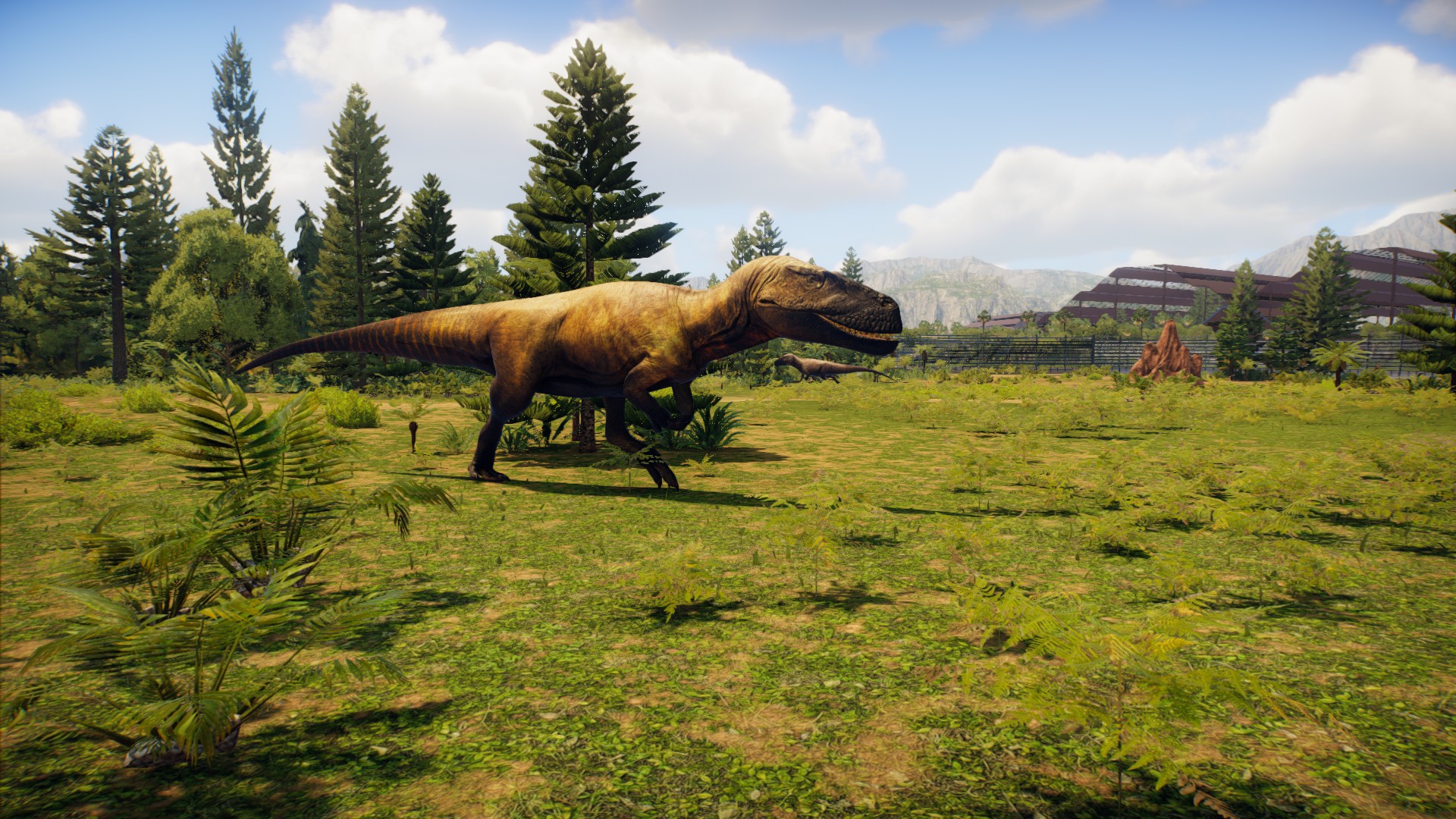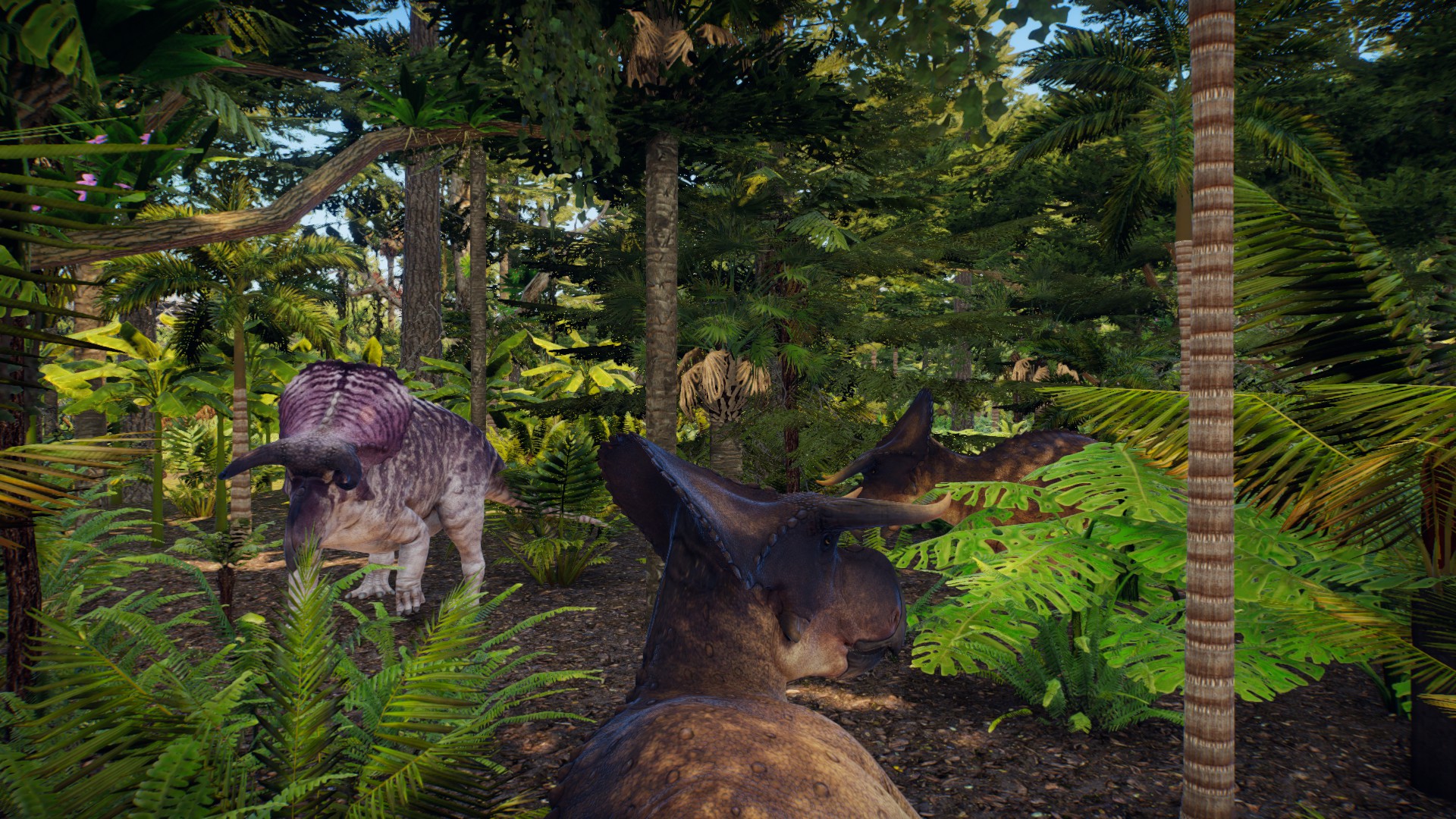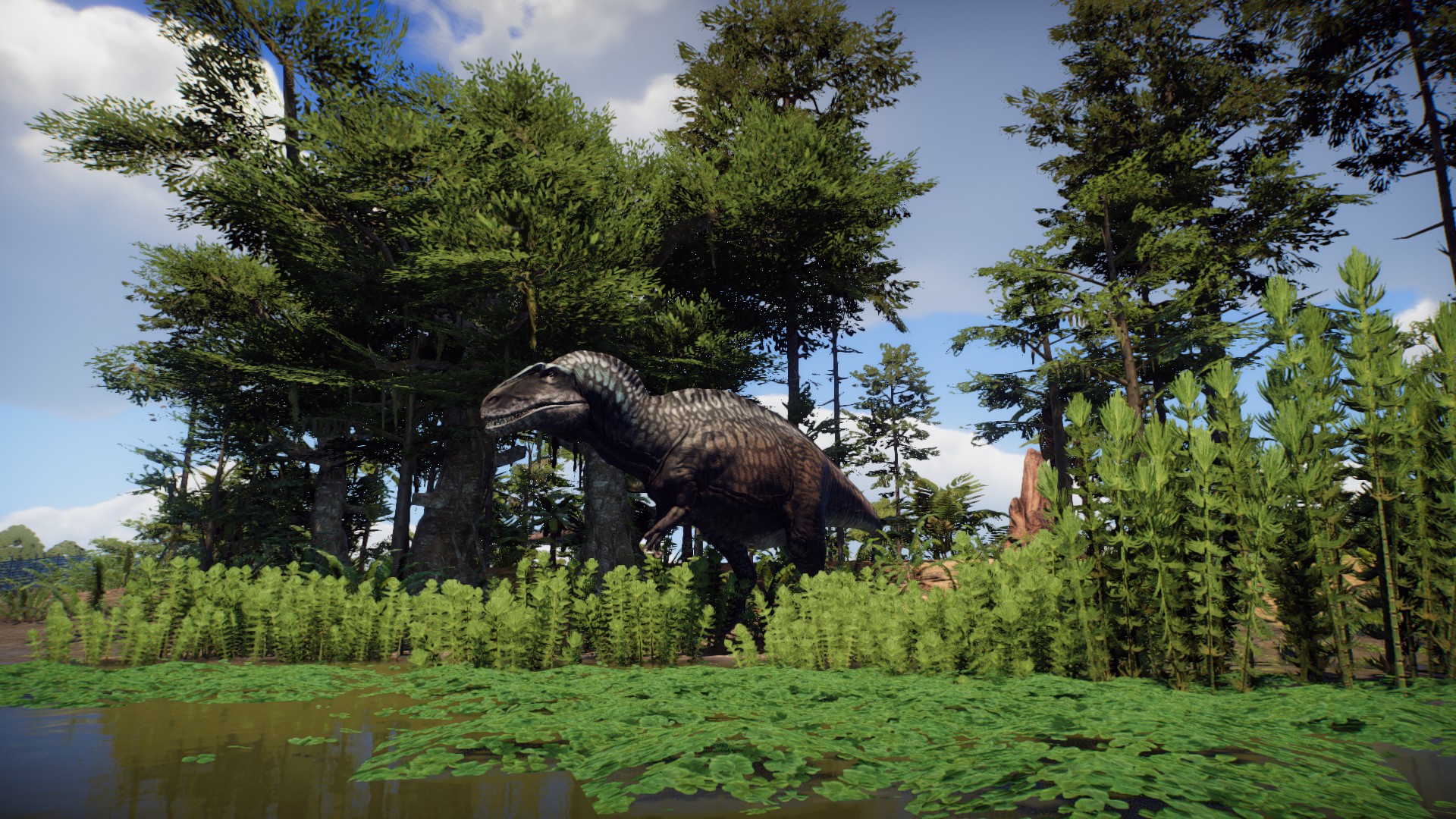Un court guide du feuillage dans le jeu, Afin de faire des expositions paléontologiquement informées pour vos animaux. Aussi un guide pour certaines plantes de jeu appropriées pour agir comme des procurations comme des expositions paléontolgiquement informées. Ce guide comprendra également la gamme de plantes désertiques encore inédites.
Arbres boréaux
Cèdre jaune de l'Alaska: Cet arbre convient parfaitement aux animaux tardifs du Pestiocène de la steppe mammouth. Bien que comme la steppe mammouth était dominée par des plantes herbacées basses(Fondamentalement, les herbes et les fleurs) je’D recommander les arbres être utilisés avec parcimonie.
Un indicateur indirect approprié pour certaines espèces de dacrydium de dacrydium, un podocarpus familial – La famille des conifères fructifiant qui remontent au Trias. Ou pour certaines espèces de cyprès tropicaux en pleurs, qui a évolué pendant le jurassique moyen à tardif. L'arbre doit être élargi pour représenter un podocarpe ou un cyprès en pleurs dans une zone qui ne ressent pas de grandes quantités de chutes de neige.
Baie d'ours alpin: Convient aux animaux tardifs du Pestiocène de la steppe de mammouth, Les formes plus plates sont les plus adaptées à la steppe elle-même, Le buisson plus grand convient plus à l'arbre, Peut-être dans les fourrés, ou vers le bas par une source d'eau.
Courant alpin: Convient aux animaux tardifs du Pestiocène de la steppe de mammouth, Les formes plus plates sont les plus adaptées à la steppe elle-même, Le buisson plus grand convient plus à l'arbre, Peut-être dans les fourrés, ou vers le bas par une source d'eau. Également adapté aux forêts tempérées froides similaires à celles de l'île de Vancouver, BC Canada, – Un environnement à peu près analogue à la formation de Prince Creek(Bien que les zones intérieures, De plus, le nord a peut-être été plus exposé et plus froid)
Douglas pour: Cet arbre convient parfaitement aux animaux tardifs du Pestiocène de la steppe mammouth. Bien que comme la steppe mammouth était dominée par des plantes herbacées basses(Fondamentalement, les herbes et les fleurs) je’D recommander les arbres être utilisés avec parcimonie.
Un proxy approprié pour beaucoup ou vraiment toutes les espèces de gros pin ou de cyprès. Augmenter les arbres pour dominer la forêt et ils conviendront à toutes les forêts bien arrosées du Trias aux temps modernes. Comme utile pour les forêts de la galerie du Jurassique, comme c'est le cas comme les arbres émergents du conifère ont dominé la jungle de la formation de Kapowitz, la forêt du conifère tempéré froid de la formation de Prince Creek. L'arbre devrait dans des contextes sans chute de neige élevée, être élargi pour lui donner une canopée beaucoup plus large.
Totalement pas des arbres costaux
Séquoia: Les séquoias et leurs proches remontent à peu près au milieu du Jurassique, et des fossiles de séquoia ont été trouvés aussi loin au sud que l'Australie au milieu du Crétacé. Alors oui, Ces arbres conviennent à vos montagnes trempées de pluie ou à vos forêts de galeries(les forêts épaisses qui tapissent les rives des rivières). Définissez définitivement ces arbres, deux fois ou même trois fois la taille pour faire de vrais géants de la forêt.
Écossais’colonne vertébrale: Très adapté à des forêts et des zones ouvertes ou de feu et des zones et plus exposées dans les forêts de conifères. Les pins sont assez résistants au feu aux conifères. Pins similaires(en particulier le pin caribéen et le pin à feuilles longues) former des savanes, broussailles et forêts dans le cadre de comunitities résistantes au feu dans les temps modernes, Surtout en Floride, Les Bahamas et le sud des États-Unis et les fossiles et le charbon de bois indiquent qu'ils vivaient dans des environnements très similaires. Ceux-ci conviennent aux fourrés sur les plaines ouvertes de la formation Morrison, Et bien sûr la formation de Hell Creek.
Fougère d'épée: Plante très appropriée pour les zones abritées et humides. Les parents tropicaux sont étonnamment robustes dans des conditions humides. Se développe bien dans les marécages, bords forestiers, dans la forêt. Dans les forêts tropicales, ces plantes pousseront sur les troncs et les branches d'autres arbres.
Écossais’S pin lui-même se développe dans des conditions costales dans les conditions sèches du Méditerrainien; Bien que leur forme de croissance soit distincte et ne soit pas représentée ici. Le zoo de la planète est cette forme de croissance.
Vomir: Une plante extrêmement robuste adaptée à tous les habitats mésozoïques. Capable de mourir aux racines souterraines pendant les moments difficiles, cette plante pousse partout dans le monde. Nous avons des feuilles de fougère avec des caractéristiques similaires provenant du jurassique. En particulier en association avec les plaines inondables sèches de la formation de Morrison. Ces plantes prospèrent dans le feu ont affecté des comunités dans les temps modernes, et bien se marier avec le pin écossais pour représenter un incendie avec une forêt ouverte / une savane environ, Jetez les paumes de fans et vous avez la Floride moderne, ou la formation Hell Creek / Lance, Ajoutez certains proxys de cycad tels que les prochains palmiers de date et le semis de palmier tropical et vous avez les plaines sèches et saisonnières de la Morrison.
Treefern: Absolument partout dans le Mésozoïque. Les treeferns sont du feu rustiques et se rétabliront rapidement après avoir brûlé. Il existe des espèces rustiques apparemment à sécheresse du Mésozoïque, donc les plaines sèches saisonnières sont un habitat possible.
Le Treefern fait un indicateur indicatif pour les fougères marattiennes, ou les roi fougères agrandissent la plante et enterrer le tronc sous le sol. King Ferns habiter l'Asie du Sud moderne et l'Australie, quite widespread in the mesozoic with pollen being found across the globe in all periods of the mesozoic.
Scrubland
Norfolk Pine: A legitimate costal plant! Il’s small and only immature trees are represented. A neat tree but adult trees look much different to the immature tree, so upsizing them can only go so far. The only member of the aracarian conifers. Aracaria generally can’t handle fire. They will thrive in dry and seasonal conditions even in well draining soils. We have fossils of similar plants in the late triassic. A suitable plant for dryland thickets and forests alike, although these trees are way too small to break through a forest canopy and dominate a forest, the way many aracaria species do to this day.
Aleppo Pine: The perfect pine for arid and hot conditions, perfect for scrubland and desert conditons from the Permian till the modern day.
Sabal Palmetto: Suitable for tropical and sub tropical late campanian formations such as the Kapowitz, the much later late Maastrchian formations like Hell creek, definetly suitable for all species of smilodon.
Foxtail Palm: A distinct plant with a limited range in real life. It stands out, so until they bring in Australian megafauna it’s going to stick out to pedantic plant folk like myself.
Italian Sunflower: Gloriously ambiguous. The model of this plant can be used for scrubland, mammoth steppe (again keep the taller plants off the steppe itself) the plant looks ambiguous enough without the flowers to be similar to some modern and bizzare low growing conifers, particularly in poor soils. Could be a suitable for mesozic desert enviroments.
Temperate trees
Field Elm: Basically suitable for most standard tree shaped trees of all periods, canopy is suitable for tropical trees. Can be proxied as ginkgos so far so suitable for most enviroments, when put in forested enviroments.
Holm Oak: Suitable for temperate and subtropical forests throughout the time after the end of the Cretaceous. The pressence of acorns really limits your options here.
Paper Birch: A suitable tree for temperate northern hemisphere forests from the late Cretaceous onwards.
Arrowwood: A very suitable shrub and ground cover for forests from the middle of the Cretaceous onwards. Looks like a run of the mill angiosperm shrub. Its good.
Trèfle: A suitable ground cover for moist forests from the middle of the cretaceous onwards.
Version without the flowers can be floated on top of the water to proxy as Marslles ferns, a form of aquatic fern that looks like a clover but grows like a lilly pad. Australian species thrive in desert conditions, able to sprout up and reproduce whilst water is present and stay in the ground for decades between rains.
Tropical Trees
Costal treesNoix de coco: The quintessential beach tree came about after the end of the mesozic. Until we get some tropical cenozoic animals it’s of limited utility for palentolgically inspired enviroments. Although the small tree can have dark rocks placed over it’s stem to make the plant into a cycad similar to the Triassic Leptocycas Cuban Microcycas or Australian cycas armtrongii.
Scavola: Despite being almost exclusively a costal plant this can proxy as more typical rainforest plants and ground covers, from the middle of the cretaceous onwards.
Elephant ear: Cette plante’s family has it’s origins being present in the late Campanian, and the tropical rainforests of the kapowitz formation is a suitable environment for it.
Fan Palm: As suitable for under the forest canopy as it is for more wide open areas. Use it liberally in tropical and subtropical Campanian and Maastichthan and Pleistiocene habitats.
Kapok: Suitable for more modern tropical enviroments, even by the late Maastichian most habitats were still dominated by large conifers.
Palm Seedling: As suitable for under the forest canopy as it is for more wide open areas. Use it liberally in tropical and subtropical Campanian and Maastichthan and Pleistiocene habitats.
Also able to be used to proxy as Zamia like cycads, low growning and drought hardy cycads that are suitable again, for under the forest canopy or in more open and drier areas. je’ve added cylinders of pebbles that will look like seeds from a distance.
Samanea: Suitable to fill in for early angiosperms of the midd cretaceous such as primitive laurels or rosid trees etc. These trees started appearing in riverside forests and other rather moist areas and only seemed to spread into drier niches towards the end of the Maastichian.
Bananier: Not really a great proxy, although it may have been present by the late cretaceous and thus is suitable for the Kapowitz formation
Zones humides
Bald Cypress: Present during the later stages of the cretaceous, this tree is also suitable to proxy as it’s more land loving relatives, just sink the plant into the ground to obscure any protruding roots.
Swamp Beech: Suitable for representing early angiosperm trees from the middle of the cretaceous onwards such as laurels etc. Suitable for swamps and also riverside forests etc.
Reeds and catails paparyus: Present by the the start of the Campainian, so pretty appropriate for all your big charismatic late Cretaceous dinosaurs.
Horsetails: Suitable for wetland areas during the mesozoic and through to the modern day. Can be upsized substantially to represent giant species.
Lilly pads: Suitable for the wetlands of the early Cretaceous onward.
Water hycanthe and Arrow Arum: Their relatives are present in the tropical jungle of the kapowitz formation and are suitable for repesenting aquatic and land plants in many tropical settings.
Amazonian Lillypad: Very distinct plant, of limited utility for scientific accuracy.
Désert
Blood Wood: A suitable proxy for aridland and scrubland angiosperms from the eocene onwards. A good counterpoint to the aleppo pine.
Sagaro, Pricklypear, barrel cacti: Useful for desert scenes of the cenozoic.
Yucca: Perhaps can be sunken into the ground to act as a bennitatles, a family of bizzare flowering cycad thing from the early jurassic onwards.
Saxaul: Looks suitable as a stunted desert plant of many stripes, including chleporid conifers, a family of arid adapted cypress like plants that were fire resistant and very common in dry or salty enviroments in the mesozic.
Shorter forms could seemingly proxy as ephedras a short grasslike plant from the late triassic to modern day.
Joshua tree: Useful for desert scenes of the cenozoic USA.
Date Palm: Suitable to proxy as many types of cycad similar to modern species of cycas, encephlaphantos (from Africa) and Macrozamia from Australia, these trees will often grow in groves in tropical and subtropical enviroments, in semi arid and seasonal enviroments and also in more well watered enviroments.
Formation Guide
Late Jurassic Formations
Morrison Formation:
A vast basin, bordered from the North by a retreating seaway, to the west by the volcanic front range, a mountain range which absorbs much of the rain destined to the Morrision Basin. To the North the region is more forested and humid supporting forests of huge conifers, and peatlands, and to the south it is much more arid, giving way to conifer scrub and desert, with a trend towards more aridification through time. Forests of conifers, ferns, cycads, treeferns , clubmosses and ginkgos are supported by the rivers that flow across the Morrision flood plain or underneath it; ground water supplies wetlands and swamps, oasis on the dry and unforgiving flood plain. During the short rainy season the floodplains are covered for a short time in verdant swathes of ferns, cycads and clubmosses. Fires on the flood plain seem limited in scope and reasonably rare. Little charcoal is known from the formation.
The Morrision is a patchwork of baking flood plain, forêt dense, and both temporary and permanent wetlands.
Torvosaurus tanneri
Brachiosaurus
Camarasaurus
Dryosaurus
Altmühltal Formation(also known as Solnhofen Limestone):
A hot and seasonal island, with low drought hardy vegitation, such as cycads and conifers bordered by reefs and an extremely saline lagoon. Archaeopteryx
Early Cretaceous Formations
Wessex Formation : A seasonal flood plain that sees regular fires. The first flowering trees are starting to immerge, magnolias start to join the pine dominated forests along water courses of waterside areas. Iguanodon
Yixian Formation : An incredibly significant formation in regards to natural history, the Chinese Yixian Formation confirmed to many what paleontologists had long argued: Could dinosaurs have feathers? Microraptor
Middle Cretaceous Formations
Cloverly Formation: Early Cretaceous An Early Cretaceous temperate forest system where giants shook the ground and titans clashed. Acrocanthosaurus
Huincul Formation : Late Cretaceous An arid sandstone formation within the center of Argentina, the Huincul Formation’s dry tropical fields were the cradle for titans. Argentinosaurus
Dushihin Formation : Early Cretaceous TBA Psittacosaurus
Late Cretaceous Formations:
Campanian
Dinosaur Park Formation : Late Cretaceous A Late Cretaceous formation located in Canada’s province of Alberta. Within it’s temperate and boreal forests, an assortment of hardy animals roamed.
Lambeosaurus
Parasaurolophus
Styracosaurus
Kaiparowits Formation: Late Cretaceous Nasutoceratops
Parasaurolophus
Maastrichtian
Horseshoe Canyon Formation Late Cretaceous Edmontosaurus
Pachyrhinosaurus
Hell Creek Formation Late Cretaceous Possibly the most famous formation of all, withi the Late Cretaceous temperate and coastal forests of Hell Creek, legends fought for survival.
Edmontosaurus
Tricératops
Tyrannosaurus
Prince Creek Formation Late Cretaceous A Late Cretaceous boreal formation located in Northern Alaska. The cold locale necessitated a hardy response from its denizens. Edmontosaurus
Pachyrhinosaurus
Yuliangze Formation Late Cretaceous TBA Charonosaurus
Nemegt Formation Late Cretaceous TBA DeinocheirusTarbosaurus
Djadochta Formation Early Cretaceous An arid desert environment even into the modern day, the Flaming Cliffs within the Gobi Desert preserved one of the most famous feuds in natural history. Protoceratops
Late Pleistocene Formations
La Brea Tar Pits Formation Pleistocene A popular tourist spot within the American city of Los Angeles, the La Brea Tar Pits is a crucial and highly diverse formation with a wide variety of mammals that spent their last moments enveloped in tar. Smilodon fatalis
Luján Formation Late Pleistocene Home to the famous saber-toothed tigers of South America, the swampy flood plains of the Luján Formation was a paradise for mammals. Smilodon
Yamal Peninsula Paleolithic The Yamal Peninsula is located in northwestern Siberia. Mammuthus
C'est tout ce que nous partageons aujourd'hui pour cela Royaume préhistorique guide. Ce guide a été initialement créé et rédigé par Téonmonicus. Si nous ne parvenons pas à mettre à jour ce guide, vous pouvez trouver la dernière mise à jour en suivant ceci lien.
